
It allows to keep PV going, with more focus towards AI, but keeping be one of the few truly independent places.
-
Hi!
As I dont like the result of using wide angle adapters and it is not easy to find cheap bright and wide lenses, I did some tests with a focal reducer.
The idea is, to use the much bigger image circle of the full frame lenses and squeeze it onto the m4/3 sensor. As a result this would give more light and more angle of view. As there is enough space between the backend of the lens and the image sensore, it would be possible to modify this cheap adapters (like Nikon/Canon/.. to m4/3 adapters you find on ebay) to fit a focal reducer in it. This would not only set the angle of view back to what you will get on a full frame DSLR, but also brighten the image by the same factor!
After some testing with my GH13, Antares 0.5x 2" focal reducer and Minolta MD Rokkor-X 50mm f1:1.4 ...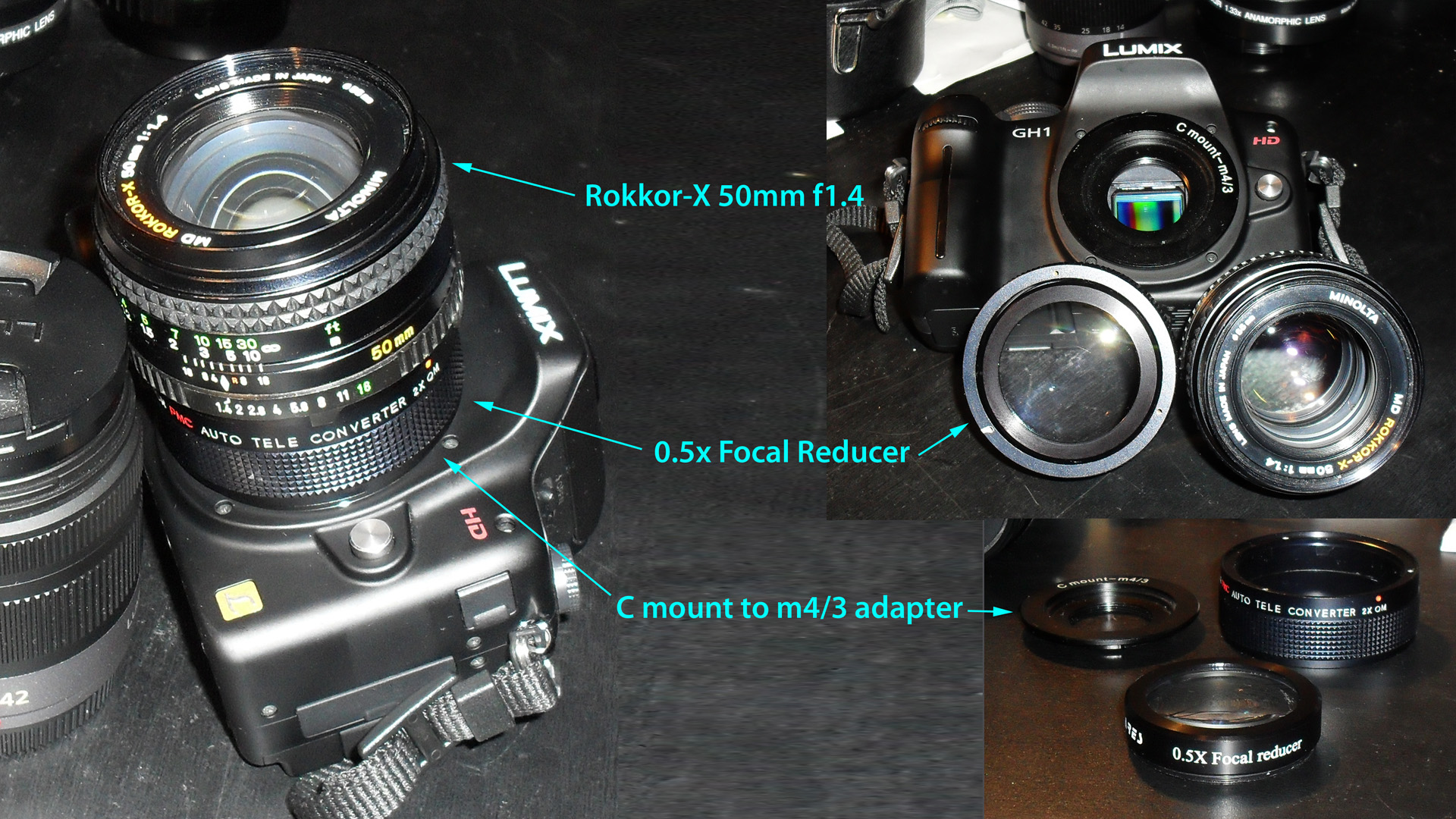
Test Image without reducer at high F-stop (sorry for the boring subject;-):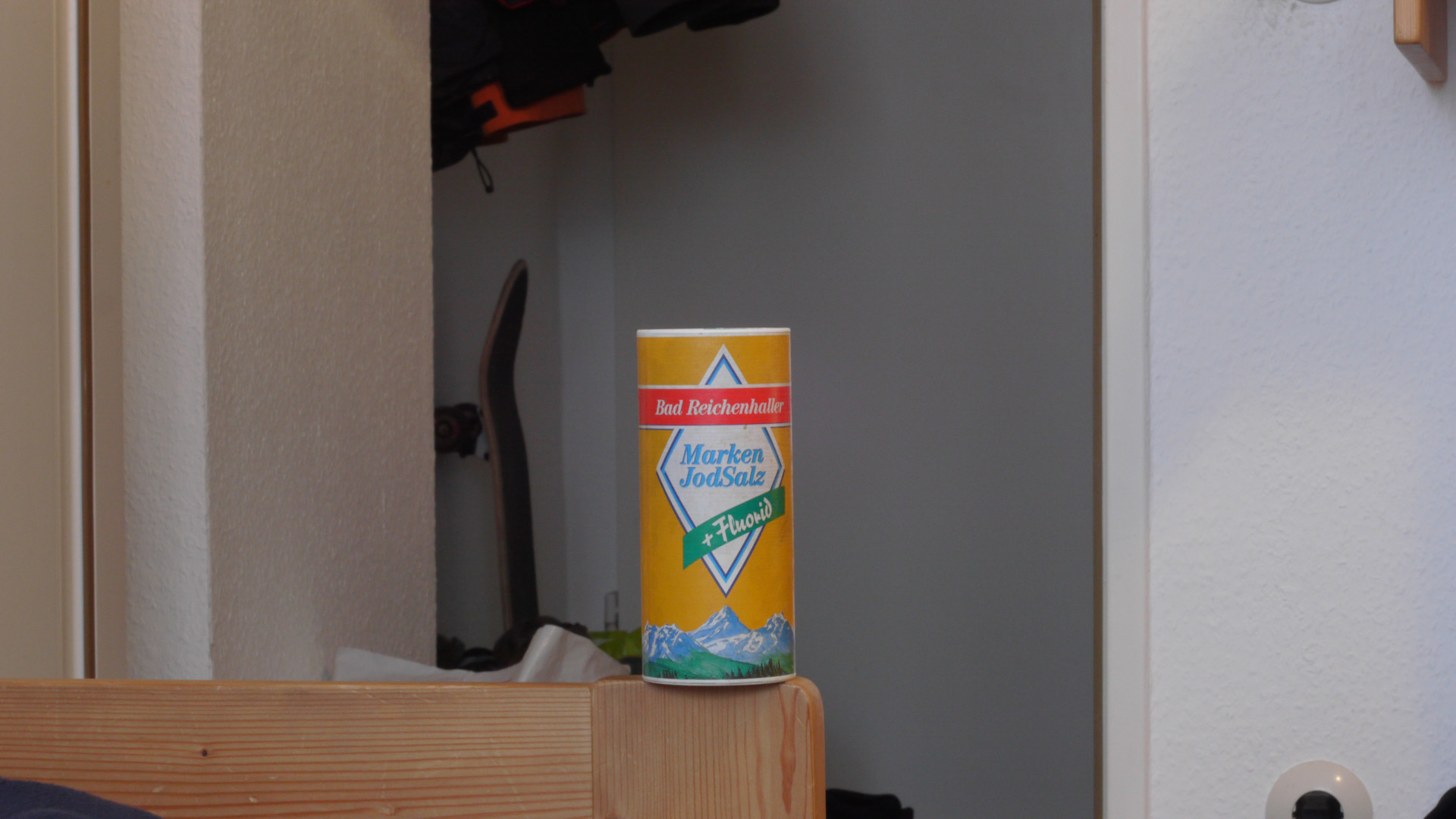
Same lens, high F-stop, same setup but WITH focal reducer: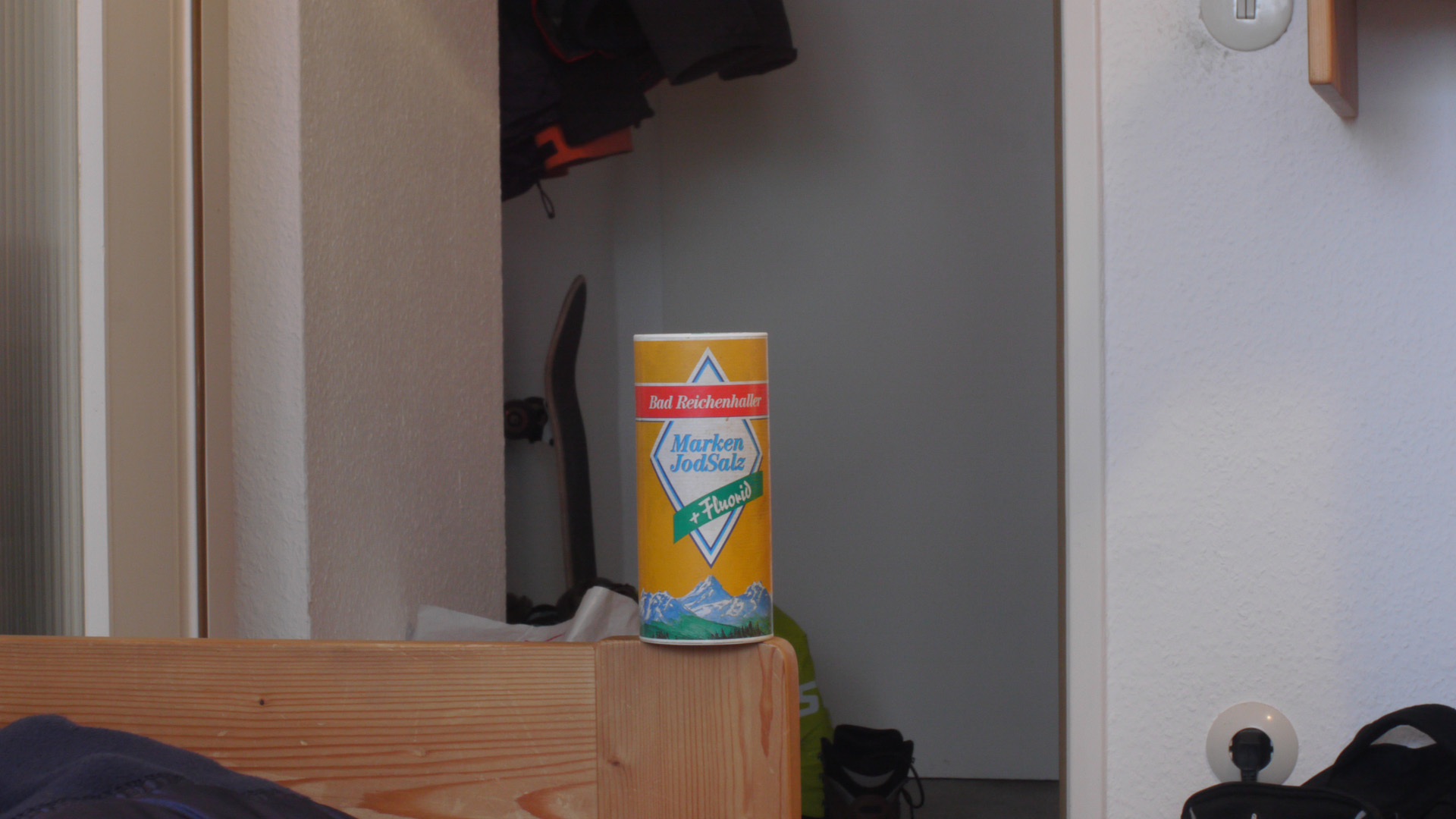
Obviously, the field of view is wider - just not as much as I like it to be. But a "stronger" focal reducer might solve that problem. The image is also brighter - in this case I used a different shutter speed - which was pretty much what I expected.
But as we all know, high F-stops are not what we want. Same setup, same lens without focal reducer, but at F1.4: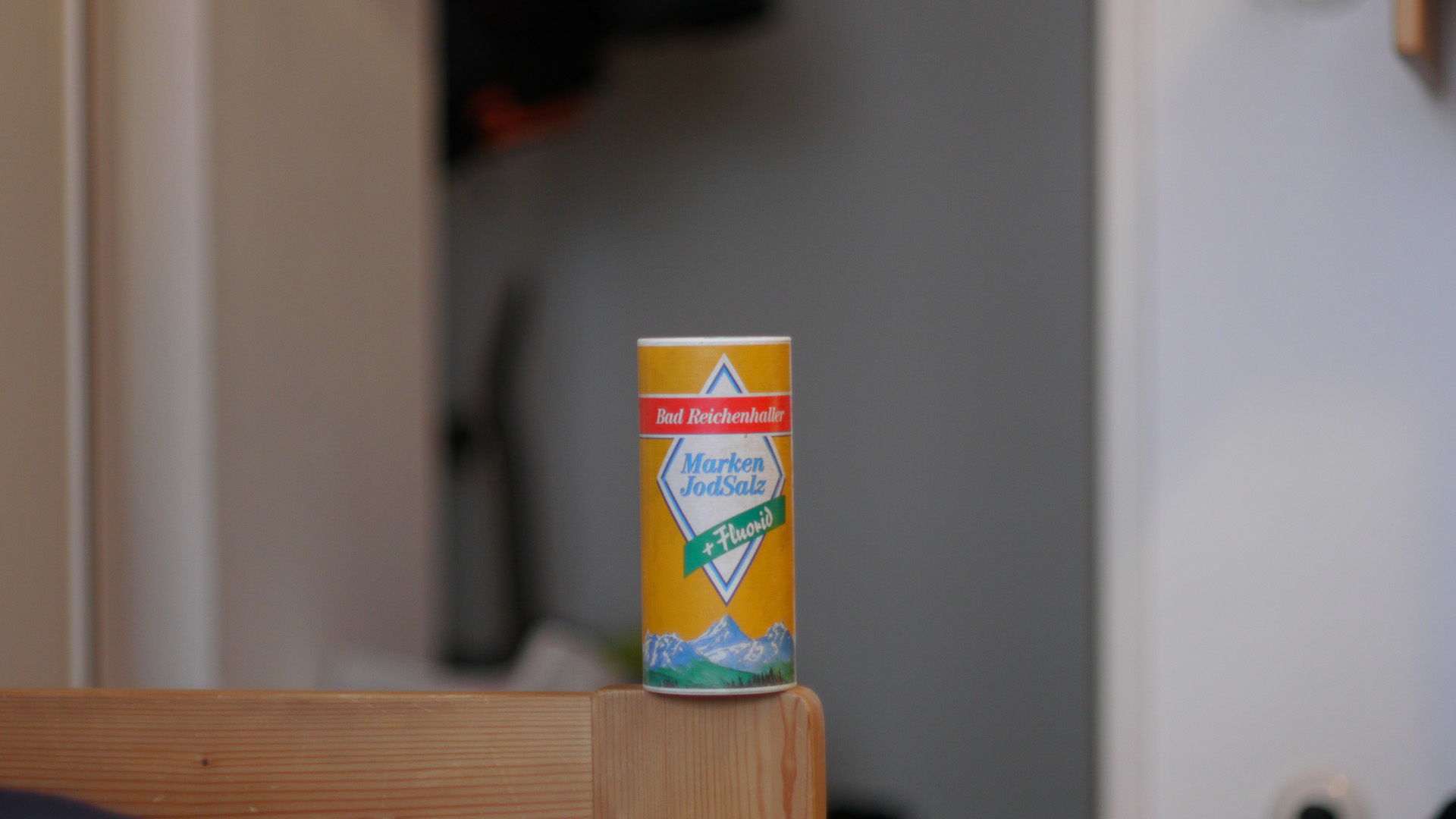
And finally the lens at F1.4 WITH focal reducer: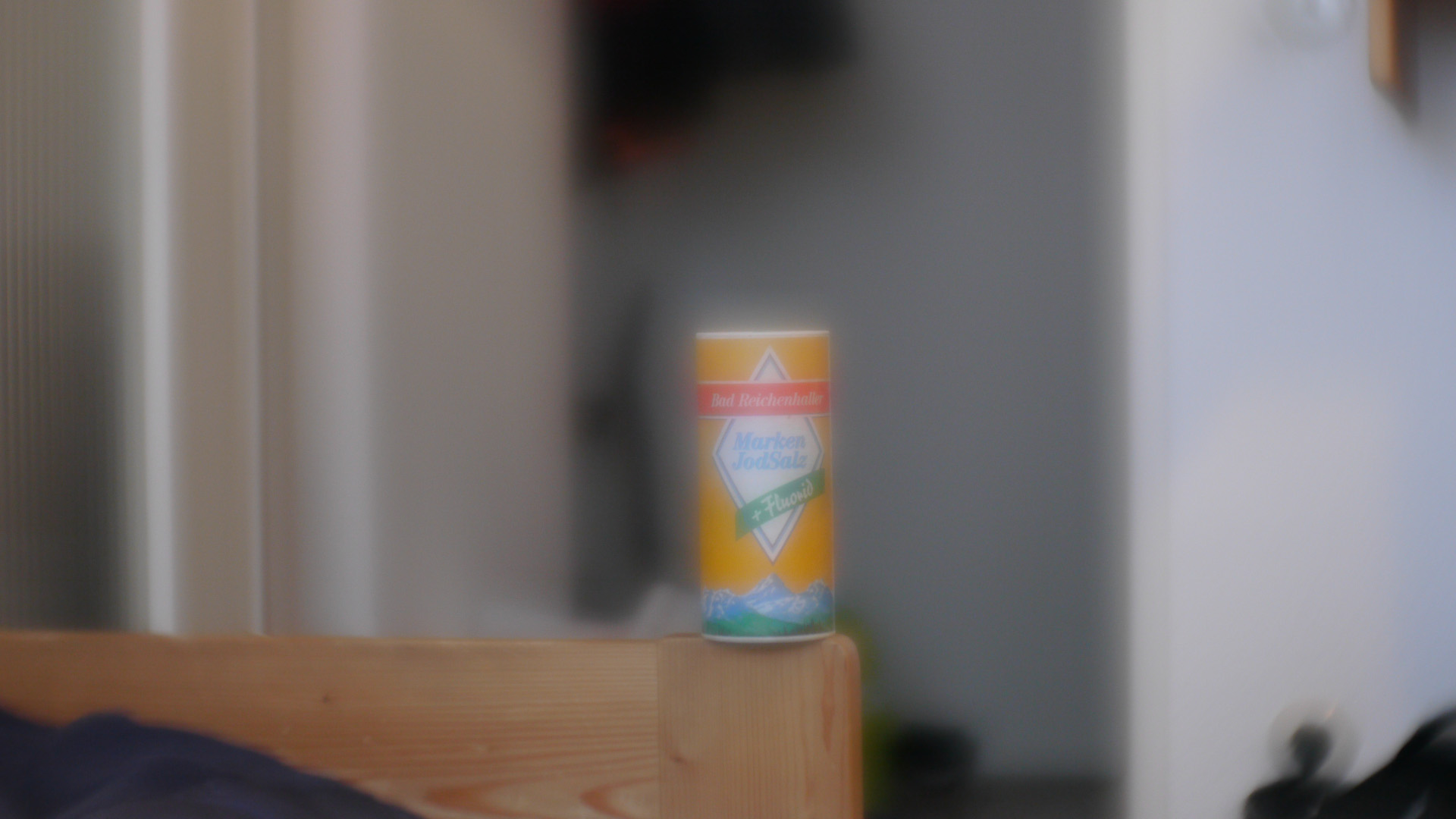
Wider field of view, brighter image but horrible IQ. The white glow is known as coma (thanks to hopeless_4ever for that information).
There are also coma correctors out there, but there is not enough space between the lenses to fit one of these also in there.
Bitcrusher did some very interesting tests with the rear element of a Tokina lens. Hopeless_4ever also pointed out, that Olympus did reworked some lenses with focal reducers to fit m4/3 - so, it is possible.
These last bits of information point in a promising direction, but there is still a lot of things to test and think of.
If we could find a setup to project the full frame image circle in good quality onto the m4/3 sensor, we wouldn't need the crop mode on the GH2 and the tiny c-mount lenses or buy the very expensive m4/3 lenses...
...but the ultimate goal would be a 1.5x anamorphic focal reducer - small, not as expensive as a full lens and the choice of the main lens would still be up to us!
Hopefully someone has a good idea, as how to proceed from here. Focal reducers with stronger light bending exist, but without solving the coma-problem, that doesn't get us closer to something usefull.

 Setup.jpg1920 x 1080 - 679K
Setup.jpg1920 x 1080 - 679K
 50mmFhighs.jpg1920 x 1080 - 330K
50mmFhighs.jpg1920 x 1080 - 330K
 50mmFhigh_w_Reducers.jpg1920 x 1080 - 343K
50mmFhigh_w_Reducers.jpg1920 x 1080 - 343K
 50mmF14s.jpg1920 x 1080 - 274K
50mmF14s.jpg1920 x 1080 - 274K
 50mmF14_w_Reducers.jpg1920 x 1080 - 256K
50mmF14_w_Reducers.jpg1920 x 1080 - 256K -
I like the way you're thinking.
I bought an early 90's Nikon/Fujix E3 digital camera to chop
up for the excellent focal reducer, inside. This lens reduced FF to 2/3 chip size. Damn thing is now worth too much to do it.
Next idea was to put an ole delph c-mount anamorphic adapter
between the lens and sensor. ....This may just work.... -
There are old c-mount anamorphic adapter O.O
I didn't know that - can you give me some names to look for (e.g. on ebay)? That might be a nice way of getting the desired pieces of glas. -
yep'
...was for an 8mm movie camera.
I'll dig around for it, but was a "mirror box" type. -
This really pains me to see. Why? Because I spent 8 months between 2009-2010 developing a focal reducer by doing all the math, prototyping, and considering legal cracks between the definitions claimed in different patents. I did all of this - just to find out the same issue as you've come to - COMA (i.e. field curvature).
I was so looking forward to the day where I presented my product to you all. It sucks to try something and fail, but I learned a lot in the process.
Congrats on what you've done here (as shown in the first post). I'm impressed. I wish I could help get to the next step of solving the physical/optical limitations presented by designing a custom focal reducer + field flattener small enough to fit into the cavity of a m43 body. My dream murmurs in the back of my mind. Oh sigh! -
This is an interesting topic, I think many have the same ideas, glad to see you are putting your hands on it. Funny I thought that a 0.5 reducer would divide the focal lengh by 2 instead it seems like 0.8. In the other thread there is a lot of work, I wonder what lenses have a built in reducer for making that effect.
-
how much light do you gain from using the reducer?
how does the image look at f2.8/4/5.6?
-
@DanDOF
Sad to here that you got stuck at the same point. But, as I know from my own experience, you learn so much more from trying than only thinking about it...;-)
@andres
Yes, 0.5 means half the focal lenght, but only when used in a telescope (these reducers are designed for telescopes). So I would guess the 0.5 only works for parallel light rays. Beeing so close to the main lens and sensor means everything but parallel rays.
@pingpong
If you get 20% more field of view, you also gain about 20% in brightness (in ISO or F-stop). Its a bit tricky to calculate as you have to take into account that you start with 20% width, a linear dimension, then convert it to area increase an then go from that to the ISO or F-Stop numbers. Sorry, I can't find the calculations I did when I tested this setup :-(
But you really get the light of the bigger image circle on the m4/3 sensor - so if you get all the full frame image down to m4/3 size you would gain 4x the light per pixel = 2 F-Stops (minus the light the focal reducer eats up, but thats only a tiny fraction). With the 50mm F1.4 that would result in a crazy 50mm F0.7 lens!
The image gets more and more of that coma glow when you open up the aperture - a smooth transition. -
so if a focal reducer were found that put the entire ff image circle on the m4/3 sensor, and a 24mm f2.8 lens had a usable/crisp image at f5.6, then one would effectively have the equivalent of a 12mm 2.8 m4/3 lens?
-
Yes, thats exactly what I think it will be.
-
@Psycho
I found here http://cgi.ebay.fr/Antares-1-25-0-5x-Focal-Reducer-for-Telescope-/110721122830?pt=LH_DefaultDomain_0&hash=item19c77e420e some interesting comments about reduction ratio variation:
"The actual reduction will vary a little over or under 0.5x depending on exactly where the focal reducer is placed in the optical path." -
Yes, that exactly what I mean. Unfortunately we have only about 2-3mm to move the focal reducer back- or forward, so we will need a focal reducer or something similar with much stronger light bending.
-
I'm resurrecting this thread to generate interest again. I've read all the posts here and and on other camera forums and also participated in telescope forums. I think I may have stumbled onto solutions to the problems listed in this thread, like the coma problem and why the .5 focal reducer wasn't 2x wider, fingers crossed. My Focal reducer arrived today and will be testing some things in the coming days. I am working the next two days and then heading to the South Dakota film festival for the weekend. I will try to squeeze my tests in before I leave, but if not I will be starting early next week at the latest.
-
@Brian202020 Nice! This is what the GH3 will need if the crap factor is greater than the GH2.
-
Personally, I don´t think optical adjustment is the way to go if you want a wider FOV. And the assumption that the image gets brighter by a wider focal length is just plain wrong..
If anything, this would be the time to resurrect projection adapters for those who want to counter the 2x horizontal crop factor of the bmd and the gh3.
-
@Brian202020 I'm curious to here your ideas :-)
@RRRR Its not like a shorter focal length, its more like compressing the FF image onto the smaler sensor - and that would make the image brighter (I got that as one of the expected results of my test).
-
@psycho: Very true. That was how Zeiss managed to make their F0.7 lens, by using a focal reducer.
-
There seems to be some confusion...
With the focal reducer added, the new lens system that that you just created absolutely does have a shorter focal length, and also a smaller image circle. The angle of view does not change. Focal length alone does not determine a lens's angle of view.
-
The angle of view the sensor captures does change with a focal reducer - it changes a 50mm lens that is like a 100mm lens on m4/3 sensor, back to its original full frame FoV when used on m4/3. And that would be awesome ;-)
-
I was talking about the lens's angle of view. A lens's angle of view is a property of the lens, independent of what camera it is attached to. A focal reducer generally won't change a lens's angle of view.
Please don't talk about angles of view in millimeters. That's the original source of this confusion. Angles are expressed in degrees.
-
The only characteristic of a lens is its focal length expressed in millimeters. The angle of view depends on the sensor/film size. You can have an ultra wide 50mm lens, just use it with a 20cm x 20cm photographic plate (you would need a lens with a big enough image circle so).
Thats why we all refere to a 50mm lens with a full frame sensor in mind - it wouldn't make any sense otherwise.
-
Here is a quick update on my findings. I had to order more parts, so most of my testing has gotten delayed until they arrive. Here is what I believe I figured out from what I've seen with my limited testing so far. I believe I found out why @Psyco wasn't getting a full 2x image size, and if has to do with the distance between the back of the lens and the focal reducer. When I get my new parts I can verify this with images. As for the coma issue, it still looks present. once I get the new parts and can verify the 2x image increase, I might either buy a separate coma corrector and put it inline with the focal reducer or just buy a more expensive focal reducer with built in coma correction. These are expensive and I'm not willing to pull the plug on that unless I have a pretty good idea everything else works correctly.
Anyway my goal is to come up with a list of things to buy and where to buy them to make a M4/3 to Nikon F or Canon EF adapter with a built in focal reducer that works. I'll keep you all posted.
-
While this would be great on the gh2, it would be amazing on the BMC.
-
Lots of interesting and good thinking in this thread. The back of the lens is more critical in the optical path than the front of the lens. It is even difficult to make a good quality tele converter and this problem is magnified when trying to create a wide converter at that end. If it is difficult to produce a good quality wide converter for the front of the lens, it would be more so at the back of the lens.
This must be the reason good quality optical adapters for adapting lenses of different flange distances are rare. Canon produced one years ago to fit FD lenses to EOS flange distance, but even they chose to make it a tele converting adapter and not the other way around.
-
Psyco, I encourage you to go study the Wikipedia articles on focal length, image circle, field of view, angle of view, and also f-number while you're at it, because you stated the incorrect definition of f-number in another topic. I think you have an intuitive sense of what's going on, but you're using the wrong terms and expressions.
Forget the sensor for a moment. Hold the back of a lens up to a wall with a bright light in front of the lens, so that you can see the entire image projected by the lens on the wall. The image is a circle, and it's showing the lens's entire field of view. A lens has a field of view, independent of any sensor. If you do this with a 50-mm lens for a big view camera, the view is wide. If you do it with a 50-mm lens for a 35-mm photographic camera, it's a normal view. If you do it with a 50-mm lens for a 1/3-inch CCTV camera, it's a telephoto view. The lens's focal length is one property of a lens, and not the property that describes its angle of view. Angle of view is another property of a lens, and it can be expressed in degrees. The diameter of the image circle is another property, expressed in millimeters.
Adding a focal reducer creates a new lens system with a shorter focal length and a narrower image circle. Adding a focal reducer does not change a lens's angle of view.
Finally, when considering the effect of a sensor, if the sensor is not as wide as the image circle, then the angle of view of the camera system (sensor plus lens) will be narrower than of the lens itself.
-
@RRRR "Personally, I don´t think optical adjustment is the way to go if you want a wider FOV. And the assumption that the image gets brighter by a wider focal length is just plain wrong.."
Focal length itself does not change brightness, but changing the magnification or size of the image circle does. If you took a lens farther away from the film thus creating a macro adapter, the focal length remains unchanged while magnification and image circle increases. The image is enlarged and becomes dimmer. This same would work the other way around and that is what the focal reducer would achieve.
Howdy, Stranger!
It looks like you're new here. If you want to get involved, click one of these buttons!
Categories
- Topics List23,992
- Blog5,725
- General and News1,354
- Hacks and Patches1,153
- ↳ Top Settings33
- ↳ Beginners256
- ↳ Archives402
- ↳ Hacks News and Development56
- Cameras2,367
- ↳ Panasonic995
- ↳ Canon118
- ↳ Sony156
- ↳ Nikon96
- ↳ Pentax and Samsung70
- ↳ Olympus and Fujifilm101
- ↳ Compacts and Camcorders300
- ↳ Smartphones for video97
- ↳ Pro Video Cameras191
- ↳ BlackMagic and other raw cameras116
- Skill1,960
- ↳ Business and distribution66
- ↳ Preparation, scripts and legal38
- ↳ Art149
- ↳ Import, Convert, Exporting291
- ↳ Editors191
- ↳ Effects and stunts115
- ↳ Color grading197
- ↳ Sound and Music280
- ↳ Lighting96
- ↳ Software and storage tips266
- Gear5,420
- ↳ Filters, Adapters, Matte boxes344
- ↳ Lenses1,582
- ↳ Follow focus and gears93
- ↳ Sound499
- ↳ Lighting gear314
- ↳ Camera movement230
- ↳ Gimbals and copters302
- ↳ Rigs and related stuff273
- ↳ Power solutions83
- ↳ Monitors and viewfinders340
- ↳ Tripods and fluid heads139
- ↳ Storage286
- ↳ Computers and studio gear560
- ↳ VR and 3D248
- Showcase1,859
- Marketplace2,834
- Offtopic1,320




